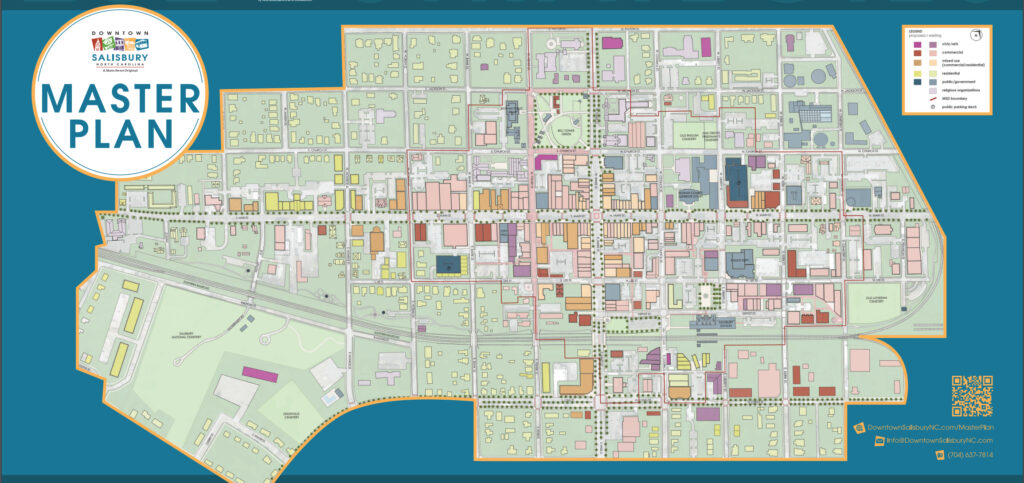Salisbury City Council approves downtown master plan
Published 12:10 am Friday, March 15, 2024

- This map shows the proposed and existing features in the downtown Salisbury area. Submitted/Salisbury Post.
SALISBURY — At the March 5 Salisbury City Council meeting, Downtown Development Director Sada Troutman presented the 2025 downtown Salisbury master plan, which will be the blueprint for how the city and Downtown Salisbury, Inc. refine the area.
Troutman said the current plan was delayed due to COVID and that it stands on the shoulders of previous ones from 2000 and 2010. The plan’s objective is to “assess strengths and opportunities for the community to manage strategic and intentional public and private infrastructure improvement, development and business recruitment.”
“We are by no means going and telling private property owners what they need to do with their property. We’re identifying opportunities that we think exist in the community based on things that we see we need or we can improve upon,” Troutman said.
The plan encompasses six distinct strategies and goals.
For a place to experience history, the aim is to have “historically inspired” public art pieces for tour routes, get the word out about Salisbury history through marketing and publicity, remodel historic buildings such as the Empire Hotel, offer weekend tour packages, and share information on the resources that the Rowan Public Library has.
As a place to learn and to experience the arts, DSI wants to establish more locations for artists to work, carry on with Buskers Bash to showcase local musicians, amplify public art school programming and youth programs and create outdoor public performance zones.
To foster the downtown as a place for business, DSI will continue to work with local institutions like the Rowan Economic Development Council and the Rowan Chamber of Commerce to attract employers, develop the Main Street project to make the downtown more walkable, upgrade pedestrian safety by constructing lighting and signage, and grow a “targeted retail recruitment strategy” for minority-owned businesses.
As a place to shop, dine, and play, it’s important to provide “customer-friendly” business hours for people to utilize, add to short-term parking options, have more waste collection and outdoor dining, and increase residential options in and near the downtown.
To make the downtown a place to live for residents, there are expectations to remodel historic buildings for residential use, improve the area near the depot, and generate more safe sidewalks, benches and nightscape lighting.
In order to have the downtown be a place to gather as a community, the master plan entails building an “indoor assembly space,” have college students and young people be more engaged in city ventures, enlarge public access to the downtown by refining sidewalks, greenways, bike lanes and by “building a multimodal transit center.”
The master plan also included three key demographics within a five-mile radius: midlife constants, southern satellites, and old and newcomers.
Midlife constants are seniors or people near retirement age who have “below average labor force participation and above average net worth.” They live near metropolitan areas, but actually reside in the more rural parts of the community. They do not tend to loosely spend their money.
Southern satellites are the “second largest market found in rural settlements, but within metropolitan areas located primarily in the South.” These are “slightly older” married couples who own their own homes. They work in a multitude of occupations like health care, retail and construction. They prefer outdoor activities and DIY home projects.
Old and newcomers are people who are single and live a more frugal lifestyle. They occupy neighborhoods where people mostly rent. Some are starting their careers, are about to retire, are in college or are taking adult education classes. They are supporters of charitable and environmental causes.
Troutman said they will send the plan out as a poster-sized document and have it be available online.
At the end of the presentation, the council ultimately chose to approve the plan. Mayor Pro Tem Tamara Sheffield, who is the liaison for the DSI board, praised everyone who contributed to it.
“The ton of work that’s gone into this,” Sheffield said. “It’s just been very collaborative. We can’t execute a plan if we don’t have a plan.”





